Standing like a huge sculptured work of art on the highest elevation of the town of Miagao is its magnificent church fortress that bears the official name of Santo Tomas de Villanueva Church. It is more popularly known simply as the Miagao Church--chosen as one of Unesco's World Heritage Sites.
As I alighted from the deadly Jeepney that brought me to this lovely town, I experienced how immensely satisfying it was to take a first glimpse at this beautiful church fortress. I have seen it before many times, beautifully photographed on many travel books and fellow bloggers' sites--but nothing compares to seeing the church as it loomed large right before my very eyes.
As it happened, no photographer can do it justice. To see its real beauty, you need to see it with your own eyes. A journey to Miagao is therefore in order. Thankfully, you don't need to hang on to a Jeepney like I did. You can even hire a taxi in Iloilo if you want a more convenient ride. I only did the treacherous ride because that's the only way I can be able to photograph the road we were treading.
Before coming to Iloilo, I have already researched for quite sometime about the history of the Miagao Church. My little research on some dusty worn books in the National Library revealed that there had been two previous churches built before the present Miagao Church.
The first church was built in 1734 near the banks of the Tumagboc River. Muslim pirates from the sea used the river as a passageway to attack the Miagao town, and in 1741, the pirates looted the town and destroyed the church with fire and cannon bombardment. The townspeople could not defend their town and church as the pirates always attacked at night.
Unfazed by the pirate terrorism, the townspeople, led by the Cura Parroco Fray Fernando Camporedondo, built another church near the river in 1746. But again, ensuing attacks by the Muslim pirates led to the destruction of this second church.
For sometime, the Miagaonons were left without a place of worship. And the townspeople were on the verge of panic as to when the next pirate attacks would come. Finally, in 1786, the Miagaonons--led by Fray Francisco Maximo Gonzales--decided to sacrifice convenience and built another church far from the river--unto the highest elevation of Miagao town. The idea was to also make the church a sort of a fortress with the two massive bell towers doubling as watchtowers to look out into the sea for anticipation of another pirate attack.
Limestone blocks were quarried from Sitio Tubog in nearby San Joaquin and from as far as the Igbaras mountains to serve as the building blocks of the church. Completed in 1797, the massive fortification boasted a foundation that sank six meters into the ground, and the walls three and a half meters thick (including the buttresses)--too thick that no pirate bombardment can destroy it. Legend has it that the church has secret passages and dungeons. The church interior can also accommodate the townspeople as a sort of camp in case of pirate land invasion. The church windows were held higher than usual so as to avoid any shelling. Thus the church which served the Miagaonons' spiritual needs also kept them safe from pirate attacks. No pirate since then was able to cause trouble to the Miagaonons.
In later years, the church had survived two fires--one in 1898, during the Philippine Revolution and the other one in 1945 during the Second World War. In 1948 a strong earthquake hit Panay island but the church remained intact. There were however already signs of wear and tear to the beloved old church and several renovation and conservation work were done in 1963 and 1975.
Well, that's essentially the shortest history of Miagao Church Fortress I can come up with. I found its history quite fascinating. Now, we will view the church in its present stage. Let us make a virtual tour of the church and relive its glory and history--and as we go along--let us make our minds transport us to those early years when the Miagao townspeople were gripped with fear and terror in anticipation of another pirate attack.
In later years, the church had survived two fires--one in 1898, during the Philippine Revolution and the other one in 1945 during the Second World War. In 1948 a strong earthquake hit Panay island but the church remained intact. There were however already signs of wear and tear to the beloved old church and several renovation and conservation work were done in 1963 and 1975.
Well, that's essentially the shortest history of Miagao Church Fortress I can come up with. I found its history quite fascinating. Now, we will view the church in its present stage. Let us make a virtual tour of the church and relive its glory and history--and as we go along--let us make our minds transport us to those early years when the Miagao townspeople were gripped with fear and terror in anticipation of another pirate attack.
The Miagao at right perspective
Facade, pediment and monument

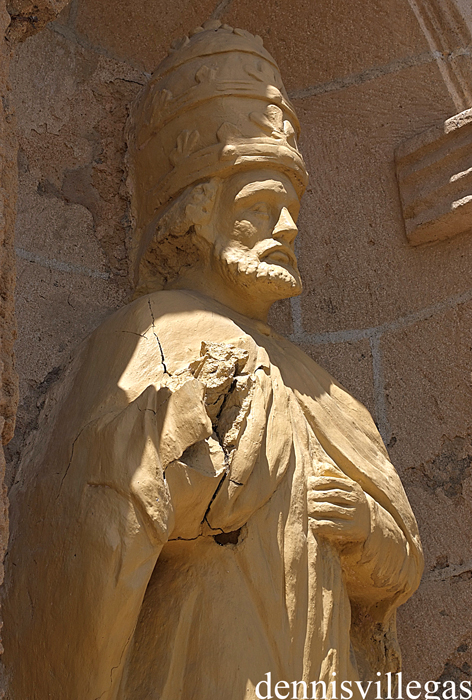
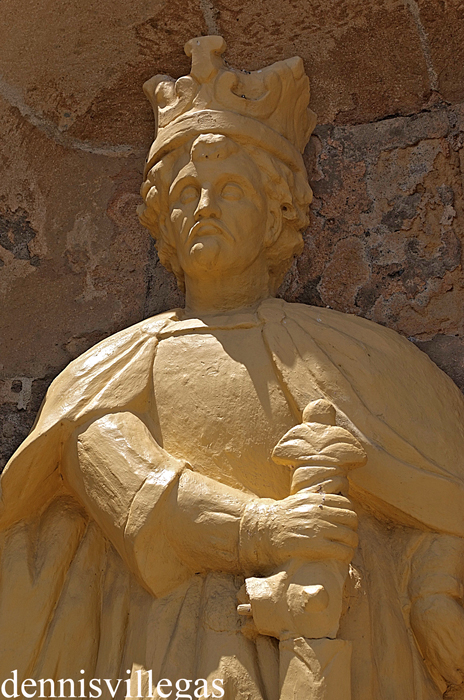
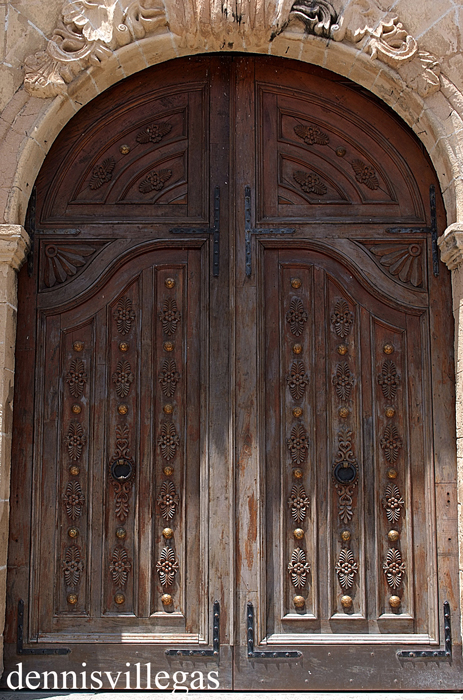
The thick massive front doors. The carvings are reminiscent of Romanesque traditional design.
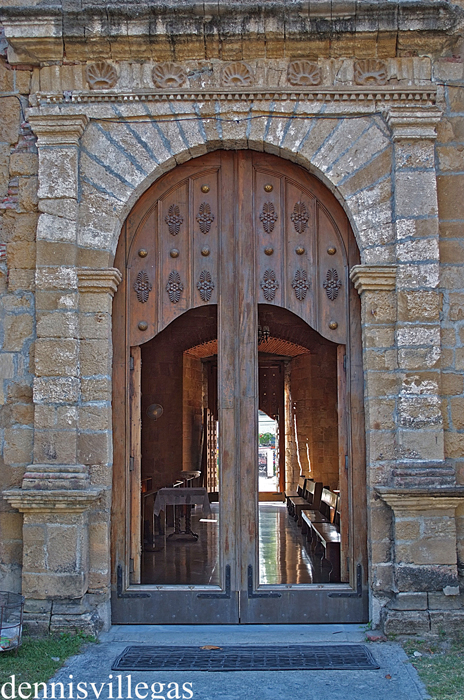
One of the main doors from the side. Again the doors and its frame are well-decorated with carvings.
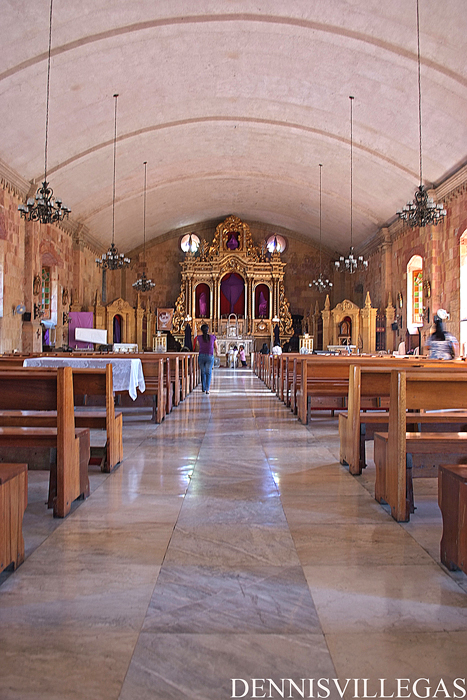
Part 2: Views from the Bell Towers of Miagao Church

Detail of the pediment.
This is the most striking feature of the church's facade. The symbolism reflects the way of life of the Miagaonons through the centuries. In bas-relief, it portrays St. Christopher carrying the Child Jesus on his back, while holding on to a coconut tree, a local tree that abounds in Iloilo. Beside this striking sculpture are various depictions of shrubs and trees that are commonly found in Miagao. The balustrades below the bas-relief separate the pediment from the facade. Below, in deep oval niche surrounded by intricate leaf ornamentations, is the life-size figure of Santo Tomas Villanueva, patron saint of Miagao.
On a special niche on the right side of the facade is the life-size figure of the Pope. I am not sure if this is already a replica, but I have not seen any similar figure inside the church. If this is the original, then it must need some restoration to repair the much-damaged right hand. It is also newly-painted. I just hope that they used acid-free paint for the painting.

On the left is the life-size figure of St. Henry. It is also newly-painted. Again, I am not sure if this is original or replica.

The thick massive front doors. The carvings are reminiscent of Romanesque traditional design.

One of the main doors from the side. Again the doors and its frame are well-decorated with carvings.

Interior. It has numerous long benches for the parishioners. The main altar is gilded and very well decorated. The ceiling is unadorned but with high chandeliers that serve as the main lighting (aside from the windows). I noticed that the religious icons are presently covered because they are being prepared for the Holy Week ceremonies.
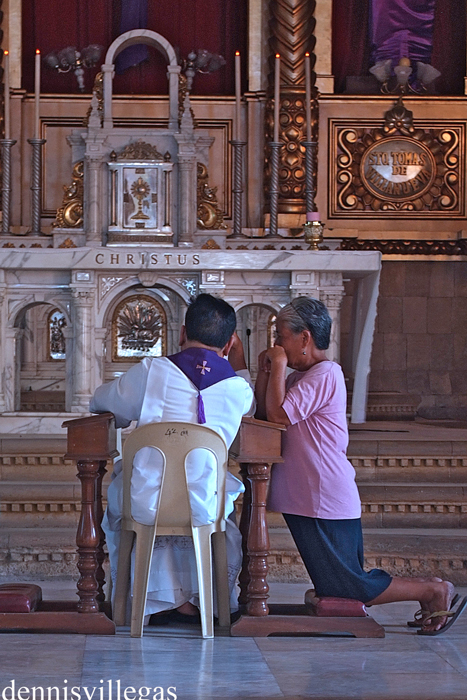

There was an ongoing confession and I didn't want to disturb the solemnity and just took a few photos of the main altar. I must say that I was quite surprised to see this unique face to face confession in Miagao. This was certainly the very first time that I have seen a confession in front of the altar, and without the confessional cubicle. I found that this was a common practice in Miagao, which mainly means a deep and very personal relationship of the parishioners to their parish priest.
Part 2: Views from the Bell Towers of Miagao Church
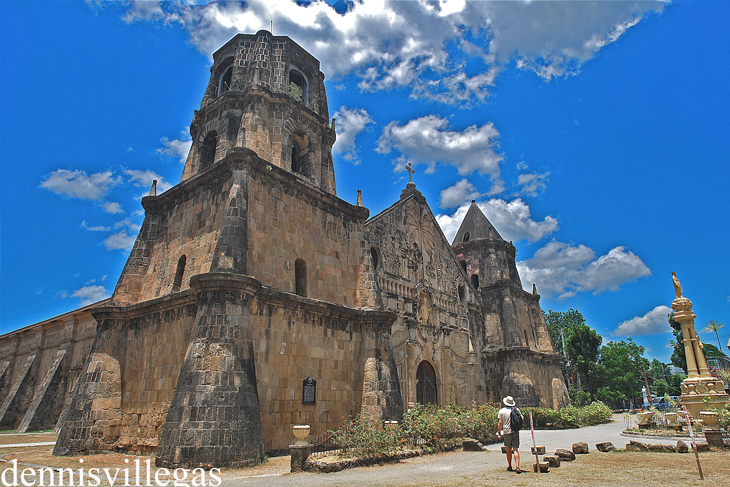
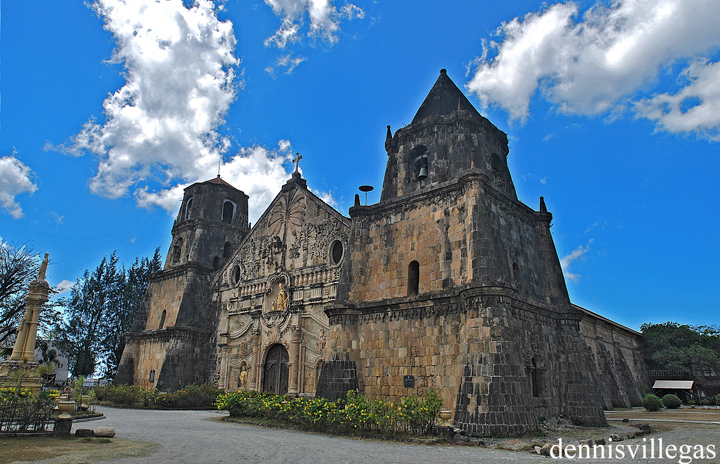
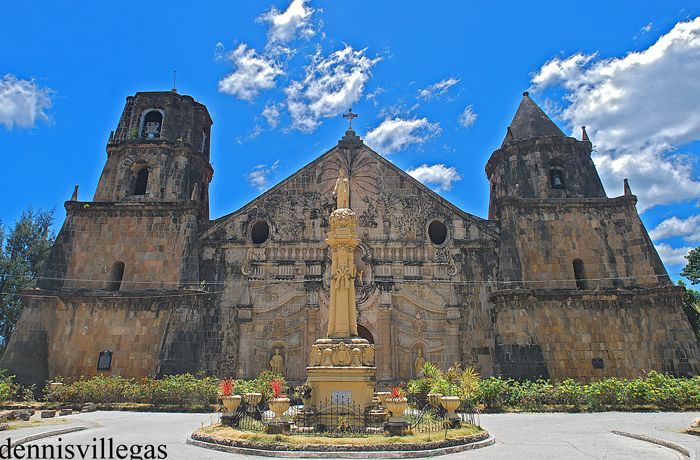
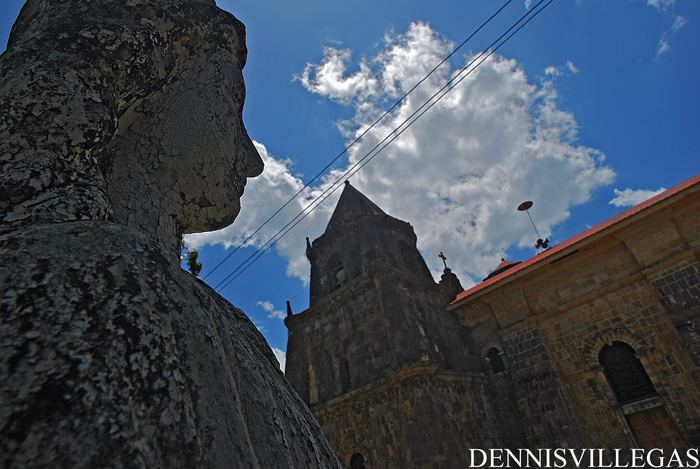
No comments:
Post a Comment